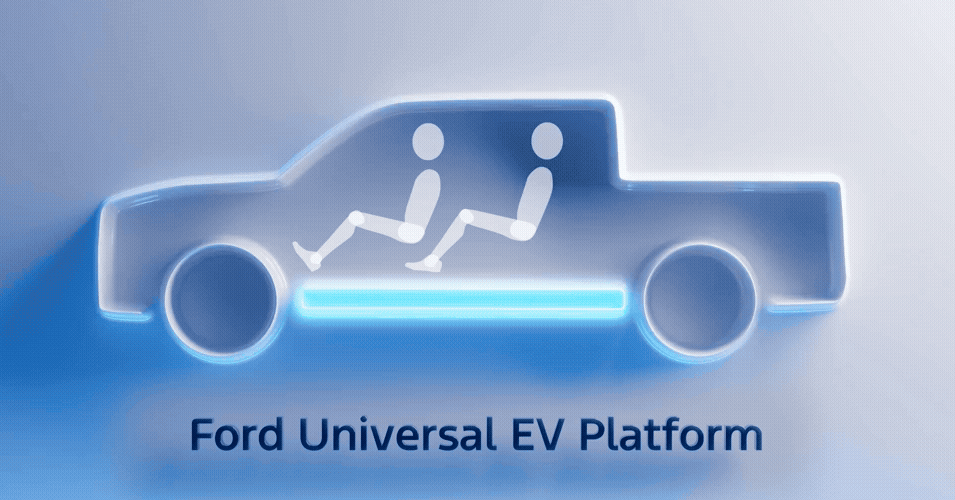Doug Field, Ford’s chief EV, digital and design officer, who formerly ran Apple‘s car program and was led the development of the Model 3 at Tesla, has been marshaling Ford’s in-house skunkworks team secretly developing this project, referred to internally as CE1.
“We build a structural battery out of the cells, and that is the floor of the vehicle. So we actually built the seats on it,” says Field. So, to be clear, there’s no frame or structure with a battery on top of it to which the seats are bolted—with Ford’s new model the battery is the structure. How does this differ from existing cell-to-chassis or cell-to-pack technology? “This is cell-to-body,” says Field, and adds that making this all work was very, very hard.
“There’s no single magic breakthrough. It’s just really, really hard engineering,” he says. “And there’s a whole bunch of problems to be solved. Like, now you have this body that has no floor, how do you keep it from bending as it goes down the line? How do you deal with the paint when you’ve painted the back half, but you haven’t painted the front half, and then you’re going to bolt them together at the end?”
“We knew we wanted to build [EVs] differently, and we decided how we wanted to build them—then we got a huge set of engineering problems we had to go solve to make that work.” The worst of these problems? “Joining the front end. Sealing, crash [strength], corrosion, dimensional accuracy—all of those things, doing those at the end is … that front end joint is definitely the most difficult.”
Yes, much of this is catching up with state-of-the-art stuff for EVs, such as zonal architecture where different functions are controlled in different parts of the car, which you can already see in the new Tesla Model Y and many China EVs. Similarly, large aluminum castings are already being used by Tesla and Chinese makers.
However, if Ford has genuinely managed to manufacture a car in three distinct and complete modules, which are then completed fully and only then bolted together, that is a genuine first. Yes, Tesla has talked about doing something like this back in 2023 with its “unboxed” EV manufacturing process, but it hasn’t done it yet. In other words, Ford may have beaten Tesla to the punch here. The old dinosaur has turned into quite the velociraptor.
Almost as impressive as Ford’s new modular manufacturing is the number of people and sheer speed with which the company has achieved this undeniable win. “What’s really interesting is the size of the team [the skunkworks had] compared to what if Ford had to do this,” says Farley. “If we forced [Ford] do it, it would have taken five times the people.”
“When we agreed to start the program, three years ago, we hired Alan Clarke. He went into a building, and it was one person. That’s how the project started,” says Field. Alan Clarke worked for Field at Tesla, where he helped create the Model 3, worked on the Y, the Cybertruck, and more. “There’s people in China now who probably have passed him, but at the time he had architected more electric vehicles than anybody in the world, so he was absolutely the right person to tap. And he’s also a talent magnet. He’s built the team really quickly—a world-class team. A lot of people who are super excited to move from a Rivian or a Tesla and build something for Ford.”
Farley thinks that Ford’s new way of making EVs is the perfect weapon to take on the Chinese automakers, the ideal example of precisely how the West needs to compete. “You’ve got the BYD model: 700,000 employees, 200,000 powertrain engineers. How do you beat them?” asks Farley.
“Turns out, Doug and Alan and the team built a propulsion system that was like Apollo 13, managed down to the watt so that our battery could be so much smaller than BYD’s. Their cost advantage on vertical integration on the battery is offset by innovation in the powertrain. We can’t beat them on scale. We can’t beat them on vertical integration. But we can beat them on innovation.”



















